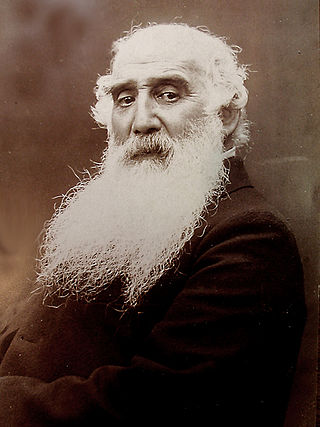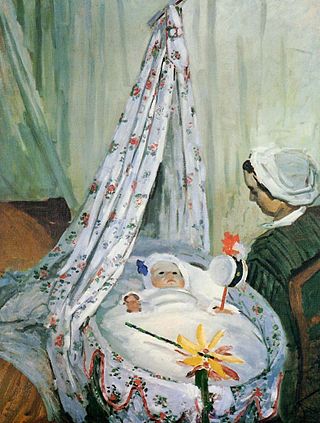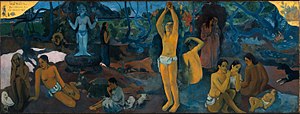
Jacob Abraham Camille Pissarro was a Danish-French Impressionist and Neo-Impressionist painter born on the island of St Thomas. His importance resides in his contributions to both Impressionism and Post-Impressionism. Pissarro studied from great forerunners, including Gustave Courbet and Jean-Baptiste-Camille Corot. He later studied and worked alongside Georges Seurat and Paul Signac when he took on the Neo-Impressionist style at the age of 54.

Maximilien Luce was a prolific French Neo-impressionist artist, known for his paintings, graphic art, and his anarchist activism. Starting as a wood-engraver, he then concentrated on painting, first as an Impressionist, then as a Pointillist, and finally returning to Impressionism.
Events from the year 1873 in art.
Events from the year 1871 in art.
The year 1896 in art involved some significant events.

Giverny is a commune in the northern French department of Eure. The village is located on the "right bank" of the river Seine at its confluence with the river Epte. It lies 80 km (50 mi) west-northwest of Paris, in the region of Normandy. It is best known as the location of Claude Monet's garden and home.

The Vienna Secession is an art movement, closely related to Art Nouveau, that was formed in 1897 by a group of Austrian painters, graphic artists, sculptors and architects, including Josef Hoffman, Koloman Moser, Otto Wagner and Gustav Klimt. They resigned from the Association of Austrian Artists in protest against its support for more traditional artistic styles. Their most influential architectural work was the Secession exhibitions hall designed by Joseph Maria Olbrich as a venue for expositions of the group. Their official magazine was called Ver Sacrum, which published highly stylised and influential works of graphic art. In 1905 the group itself split, when some of the most prominent members, including Klimt, Wagner, and Hoffmann, resigned in a dispute over priorities, but it continued to function, and still functions today, from its headquarters in the Secession Building. In its current form, the Secession exhibition gallery is independently led and managed by artists.

In art history, secession refers to a historic break between a group of avant-garde artists and conservative European standard-bearers of academic and official art in the late 19th and early 20th century. The name was first suggested by Georg Hirth (1841–1916), the editor and publisher of the influential German art magazine Jugend (Youth), which also went on to lend its name to the Jugendstil. His word choice emphasized the tumultuous rejection of legacy art while it was being reimagined.
Events from the year 1979 in art.
Events in the year 1826 in Art.
Events from the year 1902 in art.
Events from the year 1830 in art.
The year 1894 in art involved some significant events.
The year 1898 in art involved some significant events.

Félix Pissarro was a nineteenth-century French painter, etcher and caricaturist of Portuguese-Jewish descent. Known as Titi in his family circle, he was the third son of the painter Camille and Julie Pissarro.

Blanche Hoschedé Monet was a French painter who was both the stepdaughter and the daughter-in-law of Claude Monet.

The Society of Polish Artists "Sztuka" founded in 1897 in Kraków, was a gathering of prominent Polish visual artists from around the turn of the century living under the foreign partitions of Poland. Its main goal was to reaffirm the importance and unique character of Polish contemporary art at a time, when Poland could not exist as sovereign nation.

John Leslie Breck (1860–1899) was an American artist who died at the age of 39. During his short life he painted a number of notable works, and is credited with introducing Impressionism to the United States with a show in Boston in 1890. He died in 1899, reported as death by asphyxiation from lighting gas poisoning, and is interred in Forest Hills Cemetery in Boston. His works remain in a number of American museums and private collections.

Jean Monet was the eldest son of French Impressionist artist Claude Monet and Camille Doncieux Monet and the brother of Michel Monet. He was the subject of several paintings by his father and married his step-sister, Blanche Hoschedé.

Art Nouveau posters and graphic arts flourished and became an important vehicle of the style, thanks to the new technologies of color lithography and color printing, which allowed the creation of and distribution of the style to a vast audience in Europe, the United States and beyond. Art was no longer confined to art galleries, but could be seen on walls and illustrated magazines.












